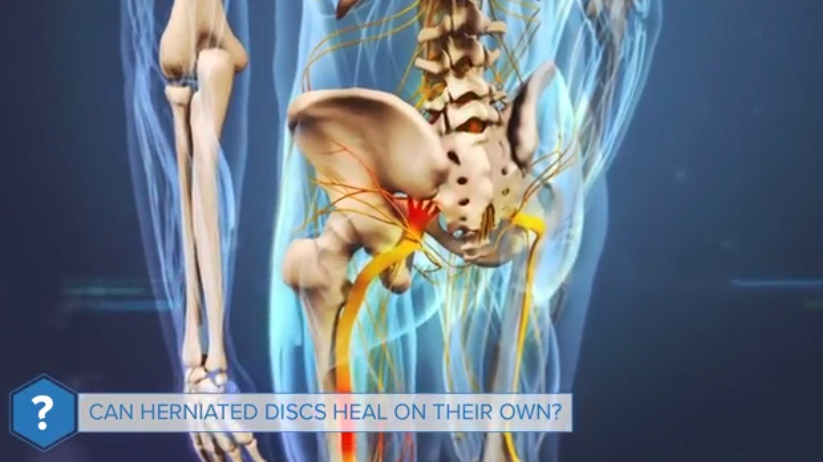Typical Symptoms of a Herniated Disc
A herniated disc most often occurs in the lumbar spine (lower back) or the cervical spine (neck), but it can also occur in the thoracic spine (upper back). Each location for a herniated disc produces different symptoms of pain.
Herniated Disc Symptoms in the Lumbar Spine
Leg pain (also known as sciatica) is the most common symptom associated with a herniated disc in the lumbar spine. Approximately 90% of herniated discs occur at L4-L5 and L5-S1, causing pain in the L5 or S1 nerve that radiates down the sciatic nerve. Symptoms of a herniated disc at these locations are described below:
- A herniated disc at lumbar segment 4 and 5 (L4-L5) usually causes L5 nerve impingement. In addition to sciatica pain, this type of herniated disc can lead to weakness when raising the big toe and possibly in the ankle, also known as foot drop. Numbness and pain can also be felt on top of the foot.
- A herniated disc at lumbar segment 5 and sacral segment 1 (L5-S1) usually causes S1 nerve impingement. In addition to sciatica, this type of herniated disc can lead to weakness when standing on the toes. Numbness and pain can radiate down into the sole of the foot and the outside of the foot.
Herniated Disc Symptoms in the Cervical Spine
A cervical herniated disc is less common than a lumbar herniated disc because there is less disc material and substantially less force across the cervical spine. The pain and other herniated disc symptoms differ by level:
- A herniated disc at cervical segment 4 and 5 (C4-C5) causes C5 nerve root impingement. Patients may feel weakness in the deltoid muscle in the upper arm but do not usually feel numbness or tingling sensations. A cervical herniated disc at this level can also cause shoulder pain.
- A herniated disc at cervical segment 5 and 6 (C5-C6) causes C6 nerve root impingement. This level is one of the most common areas for a cervical herniated disc to occur. It can cause weakness in the biceps (the muscles in the front of the upper arms) and in the wrist extensor muscles. Pain, numbness and tingling can radiate to the thumb side of the hand.
- A herniated disc at cervical segment 6 and 7 (C6-C7) causes C7 nerve root impingement and is another common type of cervical herniated disc. It can cause weakness in the triceps (the muscles in the back of the upper arm and extending to the forearm) and in the extensor muscles of the fingers. Numbness and tingling along with pain can radiate down the triceps and into the middle finger.
- A herniated disc at cervical segment 7 and thoracic segment 1 (C7-T1) causes C8 nerve root impingement. This may lead to weakness when gripping with the hand, along with numbness, pain, and tingling that radiates down the arm and to the little finger side of the hand.

